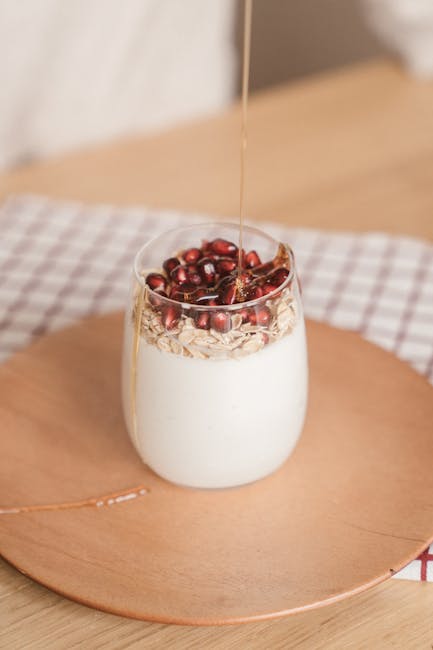Brussels sprouts, those small, cabbage-like spheres, boast a surprisingly rich history and a global presence that belies their sometimes-maligned reputation in modern cuisine. Originating in Belgium during the 16th century, as their name suggests, these miniature cabbages are a cultivar of the common cabbage (Brassica oleracea). They weren’t immediately embraced as a culinary star, however. Early cultivation focused mainly on their aesthetic appeal in gardens, rather than their culinary potential. It wasn’t until their introduction to England and other parts of Europe that Brussels sprouts truly began to gain traction in kitchens.
While their exact path to global popularity is debated, their arrival in North America is well-documented, with colonists bringing them over in the 17th and 18th centuries. Interestingly, despite their Belgian origins, Brussels sprouts haven’t always been a culinary staple in Belgium itself. Their widespread adoption in various cuisines is a more recent phenomenon. Today, they are grown worldwide, with significant production in the European Union, the United States, and Canada. In the US alone, the annual production of Brussels sprouts exceeds tens of thousands of tons. This demonstrates their significant role in modern agriculture and food systems.
Despite sometimes being perceived as a disliked vegetable, especially among children, Brussels sprouts are nutritional powerhouses. They’re packed with vitamins K and C, fiber, and various antioxidants. This has led to a recent surge in their popularity amongst health-conscious consumers, fueling innovative culinary uses beyond the traditional boiled or steamed preparations. The slightly bitter, nutty flavor of properly cooked Brussels sprouts is a testament to their versatility. From simple roasted recipes to more complex dishes incorporated in gourmet meals, their culinary profile is constantly evolving. This recipe will guide you through a simple yet delicious method of roasting, unlocking the full potential of this often-underappreciated vegetable.
Ingredients and Measurements
This recipe yields approximately 4 servings of delicious roasted Brussels sprouts. The quantities can be easily adjusted to suit your needs; simply multiply or divide all ingredients proportionally. For example, for a larger gathering, double the recipe.
Brussels Sprouts: 1.5 pounds (approximately 1.5 lbs). Choose Brussels sprouts that are firm, tightly closed, and free from blemishes. Avoid sprouts that are wilted or have yellowing leaves. Size matters! Aim for Brussels sprouts that are relatively uniform in size for even roasting. Larger sprouts may require a slightly longer roasting time. If you have a mix of sizes, consider halving or quartering the larger ones to ensure they cook at the same rate as the smaller ones.
Olive Oil: 3 tablespoons. Extra virgin olive oil is recommended for its superior flavor. However, any good quality olive oil will work. Don’t skimp on the oil! It’s crucial for achieving crispy, tender sprouts. The oil helps to coat the sprouts evenly, preventing sticking and promoting browning.
Salt: 1 teaspoon. Kosher salt is preferred because of its larger, less dense crystals, which allow for even seasoning. Seasoning is key! Don’t be afraid to adjust the salt to your taste after tasting a sprout or two during cooking. Remember that you can always add more salt, but you can’t take it away.
Black Pepper: 1/2 teaspoon. Freshly ground black pepper offers the best flavor. Freshly ground pepper significantly enhances the taste compared to pre-ground pepper, which loses its potency over time. Feel free to experiment with other spices such as garlic powder, onion powder, smoked paprika, or even a pinch of red pepper flakes for a spicy kick.
Optional additions: Consider adding 1/4 cup of balsamic vinegar for a tangy twist during the last 5-7 minutes of roasting. Alternatively, you can toss in 1/4 cup of chopped pecans or walnuts for added crunch and flavor. A sprinkle of fresh herbs like rosemary or thyme (about 1 tablespoon chopped) during the last few minutes of cooking will also add a lovely aromatic element. Remember to adjust cooking time slightly if adding additional ingredients.
Precise measurements are important for consistent results. Use a kitchen scale for the most accurate measurements, especially for the Brussels sprouts. If you don’t have a scale, use a measuring cup, but be aware that packed measurements will differ slightly from lightly packed measurements.
Equipment List
Roasting Brussels sprouts requires minimal equipment, but the right tools can significantly enhance the outcome. This list details the essential and recommended items, along with explanations to guide your selection.
1. Large Baking Sheet (18×26 inches or larger): This is crucial for ensuring even roasting. Smaller sheets might lead to overcrowding, resulting in steaming instead of roasting and unevenly cooked sprouts. Avoid using a non-stick baking sheet as high heat can damage the coating. A heavy-duty, rimmed baking sheet is ideal for containing any rendered fat.
2. Mixing Bowls (2): You’ll need at least one medium-sized bowl (approximately 8-10 inches in diameter) for tossing the Brussels sprouts with the oil and seasoning. A second smaller bowl (approximately 6-8 inches) can be helpful for separately combining dry seasonings, like salt and pepper, for more precise control. Choose bowls that are easy to grip and sturdy enough to withstand vigorous mixing.
3. Measuring Cups and Spoons: Accurate measurements are key for achieving the desired flavor and texture. A standard set of measuring cups (1 cup, ½ cup, ⅓ cup, ¼ cup) and measuring spoons (1 tablespoon, 1 teaspoon, ½ teaspoon, ¼ teaspoon) are necessary. Invest in a good quality set for precise measurements, especially for oil and spices.
4. Chef’s Knife (8-10 inches): A sharp chef’s knife is essential for efficiently trimming and halving the Brussels sprouts. A dull knife will make the task more difficult and increase the risk of injury. Ensure your knife is properly sharpened before use for clean cuts and efficient preparation.
5. Cutting Board: Use a sturdy cutting board that provides a stable base for cutting. Choose a cutting board made of wood or high-quality plastic; avoid glass cutting boards as they can dull your knife quickly.
6. Tongs or Spatula: These are necessary for turning the Brussels sprouts during roasting to ensure even browning on all sides. Metal tongs are heat-resistant and provide a good grip, while a wide spatula can also be effective for flipping and rearranging sprouts.
7. Optional: Small Rimmed Baking Dish: If you are adding additional ingredients like pancetta or shallots, a small rimmed baking dish can be used to cook them separately before adding them to the Brussels sprouts in the last few minutes of roasting.
By using this equipment list as a guide, you will be well-prepared to roast perfect Brussels sprouts every time.
Preparation Phase: Washing and Trimming
Before you even think about roasting, proper washing and trimming of your Brussels sprouts is crucial for achieving perfectly caramelized and tender results. Start with approximately 1 pound (450g) of Brussels sprouts. This quantity is ideal for a serving of 4-6 people, but you can easily adjust it based on your needs.
First, thoroughly wash the Brussels sprouts under cold running water. These little cabbages can harbor dirt and debris nestled between their leaves. Gently rub each sprout to remove any lingering soil. A vegetable brush can be particularly helpful for removing stubborn dirt from the crevices. Don’t skip this step! Clean sprouts will result in a much more enjoyable eating experience.
Next, comes the trimming. Using a sharp knife, trim the ends of each Brussels sprout. This means removing both the stem and the bottom, slightly pointed end. The stem can be quite tough and woody, and leaving it on will result in uneven cooking and a less pleasant texture. Aim to remove about ¼ inch (6mm) from both ends. For larger sprouts, you might need to remove a bit more to ensure even cooking.
Now for the optional, but highly recommended, step of halving or quartering. Larger sprouts should be halved or even quartered lengthwise to ensure they roast evenly. Smaller sprouts (about 1 inch or 2.5 cm in diameter) can often be left whole. The goal is to create relatively uniform pieces, so that they all roast to the same degree of doneness. If you have a mix of sizes, it’s best to separate them and roast the smaller ones for a shorter time, or until the larger ones are cooked through.
Finally, inspect your trimmed sprouts. Remove any loose or damaged outer leaves. These can burn during roasting and affect the overall appearance and taste of your finished dish. With your Brussels sprouts now clean, trimmed, and prepped, you’re ready to move on to the next stage of roasting and achieving delicious, perfectly caramelized results.
Preparation Phase: Prepping for Roasting (Halving/Quartering)
Before you even think about tossing those Brussels sprouts in oil and seasoning, proper preparation is key to achieving perfectly roasted results. This involves halving or quartering the sprouts, depending on their size. This step ensures even cooking and prevents some sprouts from burning while others remain undercooked. Consistent size is crucial for uniform roasting.
Start by trimming the ends of the Brussels sprouts. Use a sharp knife to remove the very bottom, woody end of each sprout. This end is often tough and won’t roast properly. Discard these trimmed ends.
Now, assess the size of your Brussels sprouts. For smaller sprouts (about 1 inch in diameter), halving them lengthwise is usually sufficient. Simply cut each sprout in half from the stem to the opposite end. This will expose more surface area to the heat, promoting even browning and crisping.
Larger Brussels sprouts (1.5 inches or more in diameter) benefit from quartering. First, halve them lengthwise, as described above. Then, take each half and cut it in half again, resulting in four roughly equal quarters. Larger sprouts take longer to cook, and quartering ensures they cook through without becoming mushy before the outsides brown.
For a truly professional approach, aim for uniformity in size and shape. It’s perfectly acceptable if the pieces aren’t perfectly identical, but try to keep them relatively consistent. This will ensure even cooking and a more aesthetically pleasing final dish. Inconsistently sized sprouts will result in some burning and others being undercooked.
Once you’ve halved or quartered your approximately 1 pound of Brussels sprouts, you’re ready to move on to the next step: seasoning and roasting. Remember to always wash your Brussels sprouts thoroughly before beginning the preparation process. This will remove any dirt or debris and ensure a cleaner, more flavorful final product.
With properly prepared Brussels sprouts, you’ll be well on your way to creating a delicious and visually appealing roasted vegetable dish. Taking the time to properly halve or quarter them is a small step that yields a significant improvement in the final outcome.
Cooking Techniques: Roasting
Roasting Brussels sprouts brings out their natural sweetness and creates a delightful caramelization. This technique involves cooking the vegetables in a hot oven with a little fat, resulting in crispy exteriors and tender interiors. Mastering the art of roasting Brussels sprouts ensures consistently delicious results every time.
Preparation is key. Start by trimming the Brussels sprouts. Remove any wilted or yellow outer leaves. Then, halve or quarter larger sprouts to ensure even cooking. Smaller sprouts can be roasted whole. For approximately 1 pound of Brussels sprouts, aim for about 2-3 cups of prepared sprouts. This will yield a satisfying serving for 2-4 people.
Choosing the right fat is crucial. Olive oil, avocado oil, or even melted duck fat work wonderfully. Aim for about 2-3 tablespoons of your chosen fat per pound of Brussels sprouts. Toss the prepared sprouts generously with the oil, ensuring each piece is evenly coated. This helps promote browning and prevents sticking.
Seasoning elevates the flavor. Don’t be shy with the seasoning! Salt and freshly ground black pepper are essential. Start with 1 teaspoon of salt and ½ teaspoon of black pepper per pound of sprouts, adjusting to your taste. Consider adding other spices to enhance the flavor profile. Garlic powder, onion powder, smoked paprika, or even a pinch of red pepper flakes can add depth and complexity.
Roasting temperature and time are critical. A high oven temperature (400-425°F or 200-220°C) is ideal for roasting Brussels sprouts. This promotes browning and crispiness. Place the seasoned sprouts in a single layer on a baking sheet. Overcrowding will lead to steaming instead of roasting. Roast for 20-25 minutes, tossing halfway through, until the sprouts are tender and deeply browned. Keep a close eye on them towards the end of the cooking time, as oven temperatures can vary.
Achieving perfect caramelization requires attention to detail. The sprouts should be tender and slightly charred on the edges. If they are browning too quickly, slightly reduce the oven temperature. If they are not browning enough, increase the temperature or broil for the last few minutes (keeping a close watch to prevent burning).
Don’t be afraid to experiment! Try adding other ingredients to your roasted Brussels sprouts, such as balsamic vinegar, maple syrup, or toasted nuts for added flavor and texture. The possibilities are endless!
Seasoning and Flavoring
Seasoning your Brussels sprouts properly is key to achieving that perfectly roasted, caramelized flavor. Don’t be shy with the seasoning; Brussels sprouts can handle a lot of flavor and will reward you with a delicious result. For a 1-pound batch of Brussels sprouts, I recommend starting with at least 1 teaspoon of kosher salt. Kosher salt is preferred because it’s less dense than table salt, allowing for more even distribution and preventing overly salty sprouts. You can adjust this amount to your taste, but it’s a great starting point.
Freshly ground black pepper is another essential. Use about ½ to ¾ teaspoon for the same 1-pound batch, or to taste. Freshly ground pepper offers a much brighter, more vibrant flavor than pre-ground pepper. Grind it right before you season the sprouts for the best results.
Beyond the basics, the flavor possibilities are endless! Consider adding other spices to complement the earthy notes of the Brussels sprouts. A teaspoon of smoked paprika adds a smoky depth, while a ½ teaspoon of garlic powder or onion powder infuses a savory punch. For a touch of sweetness, a pinch of brown sugar or maple syrup can work wonders, especially when caramelizing the sprouts.
For a more intense flavor profile, consider using herbs. Fresh herbs, like rosemary, thyme, or sage, are excellent choices. Roughly chop 1-2 tablespoons of your chosen herb and toss it with the sprouts before roasting. Dried herbs can also be used, but use about a third of the amount compared to fresh herbs. For example, use about ½ teaspoon of dried rosemary instead of 1-2 tablespoons of fresh rosemary.
Don’t forget about acidic elements! A squeeze of lemon juice or a drizzle of balsamic vinegar at the end adds brightness and cuts through the richness of the roasted sprouts. This step is particularly helpful if you’re using sweeter flavorings like maple syrup. A tablespoon or two will be sufficient.
Finally, taste and adjust as needed. Seasoning is a personal preference, so don’t hesitate to experiment with different combinations of spices and herbs to find your perfect blend. You can even add a pinch of red pepper flakes for a touch of heat!
Recommendations
For optimal flavor and texture, roast your Brussels sprouts at a high temperature (400°F or 200°C) for about 20-25 minutes, or until they are tender and slightly caramelized. Don’t overcrowd the pan; work in batches if necessary to ensure even roasting. This will help achieve that desirable crispy exterior and tender interior.
Serving Suggestions: Roasted Brussels sprouts are incredibly versatile. They make a fantastic side dish on their own, but they also pair beautifully with a variety of other dishes. Try them alongside roasted chicken or pork, grilled salmon, or even a hearty vegetarian stew. Their slightly nutty and slightly bitter flavor profile complements many different cuisines. A sprinkle of flaky sea salt and freshly cracked black pepper enhances their natural flavors. Consider adding toasted nuts like pecans or walnuts for added crunch and flavor.
Complementary Dishes: To create a balanced and delicious meal, consider pairing your roasted Brussels sprouts with dishes that offer contrasting textures and flavors. A creamy sauce, such as a balsamic glaze or a lemon-tahini dressing, can cut through the slight bitterness and add richness. Consider serving them with a grain like quinoa or farro for a complete and satisfying meal. A simple side salad with a light vinaigrette can also provide a refreshing counterpoint to the richness of the roasted sprouts.
Storage: Store leftover roasted Brussels sprouts in an airtight container in the refrigerator for up to 3-4 days. They can be reheated in a skillet or oven until warmed through. Avoid storing them for longer than 4 days to maintain quality and prevent bacterial growth.
Nutritional Information (per 1 cup, approximate): The nutritional content of roasted Brussels sprouts can vary slightly depending on the preparation method and serving size. However, a typical serving provides approximately 50-60 calories, 3-4 grams of protein, 1-2 grams of fiber, and a substantial amount of vitamin C and vitamin K. They’re also a good source of antioxidants.
Important Note: These are approximate values. The exact nutritional content may vary depending on the size and quantity of Brussels sprouts used, as well as any added ingredients (e.g., oil, seasonings).





